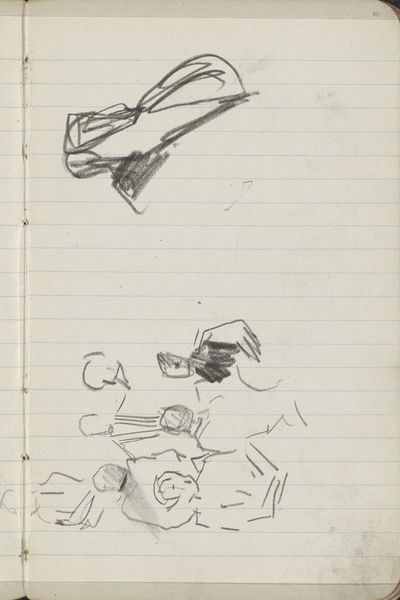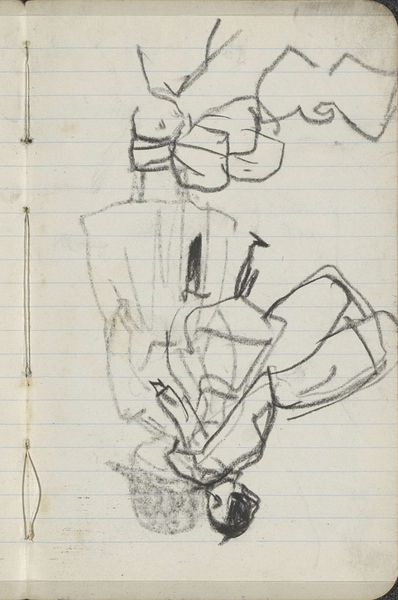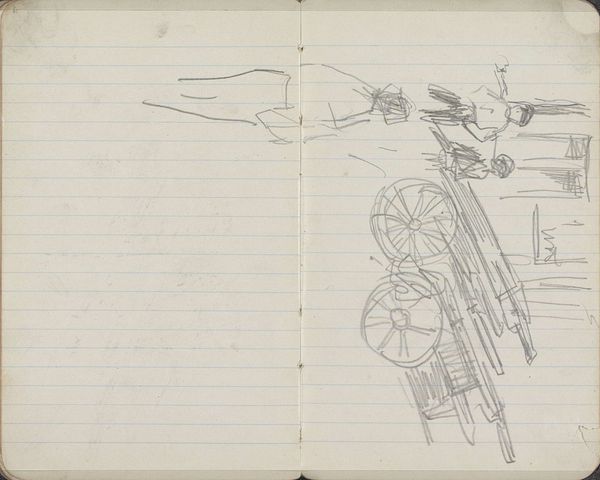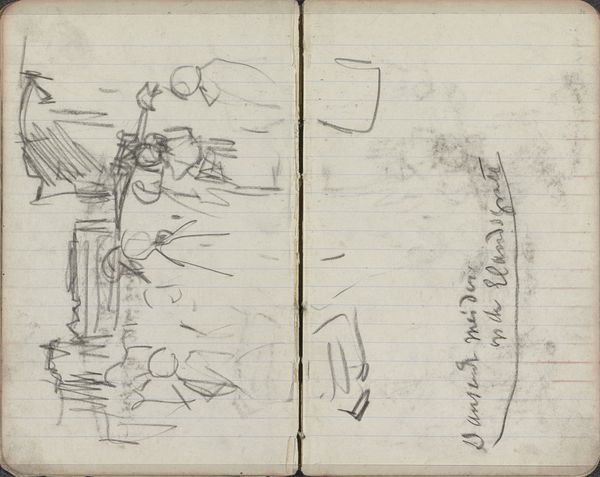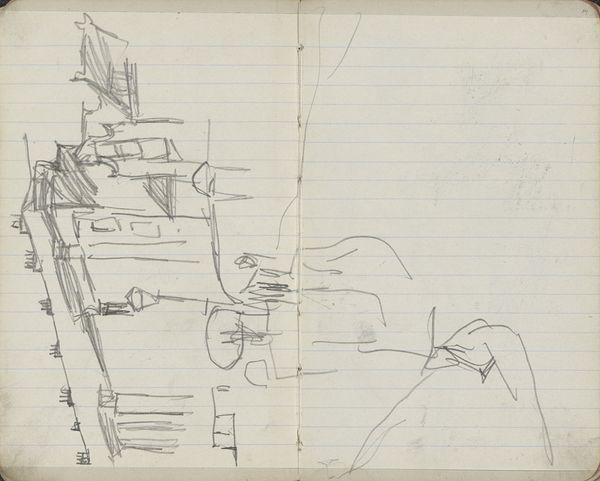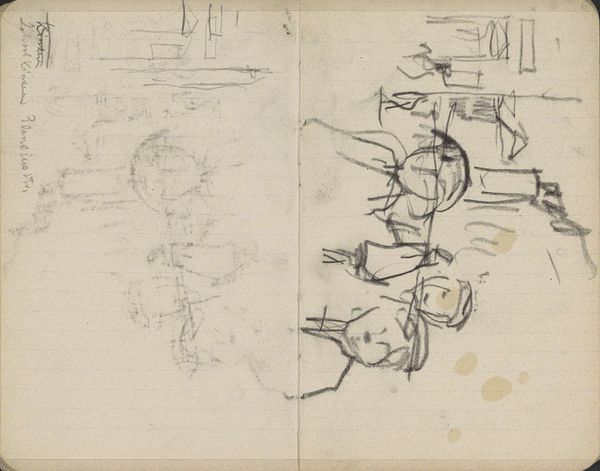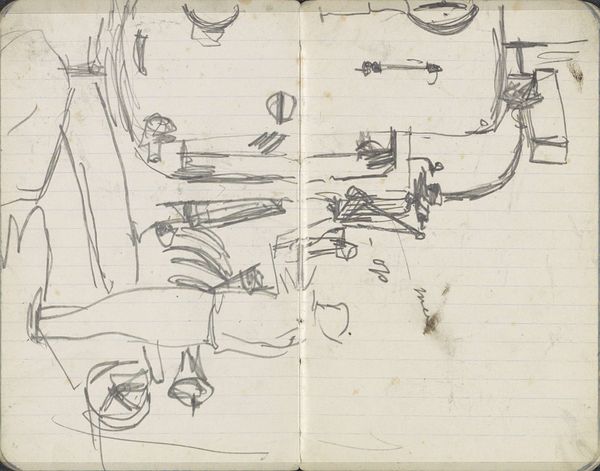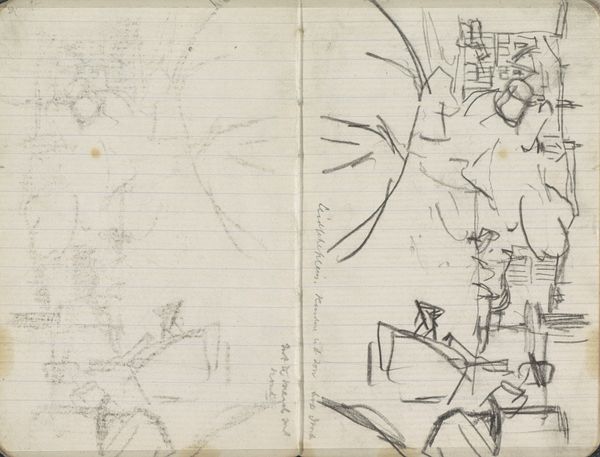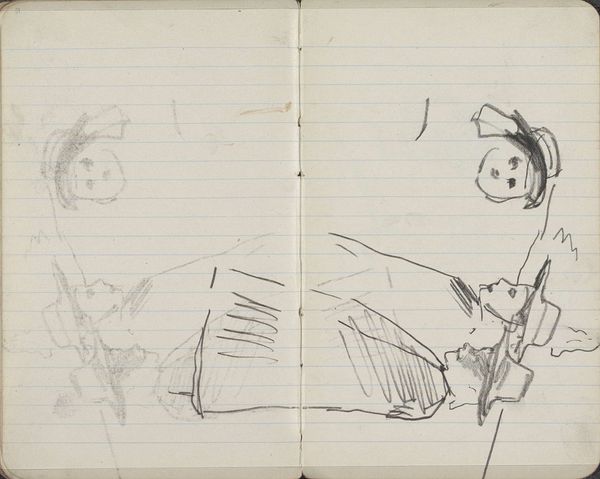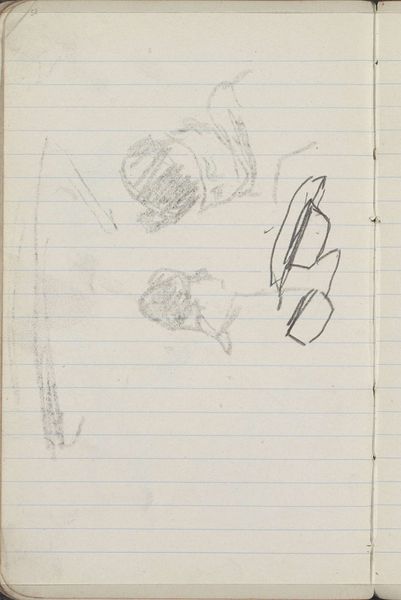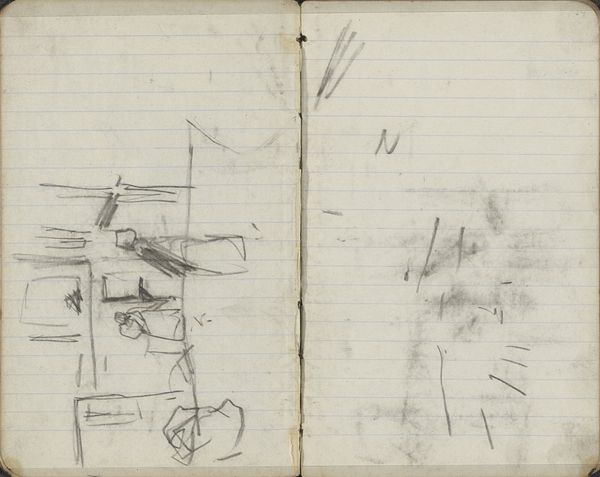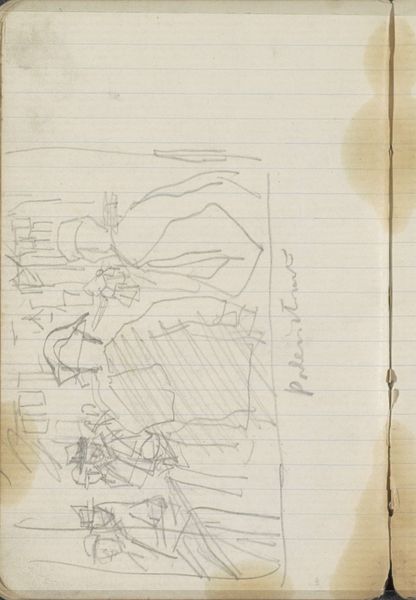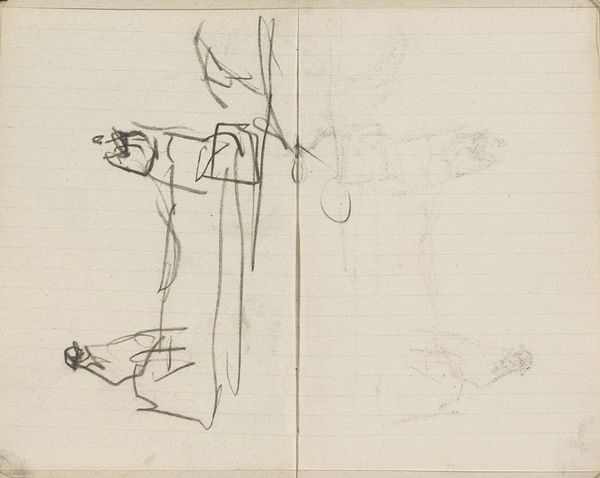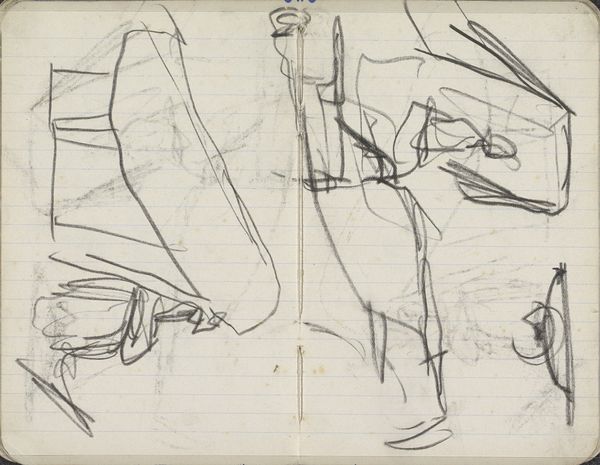
Copyright: Rijks Museum: Open Domain
Editor: So, this drawing is "Spelende kinderen in een plantsoen" by George Hendrik Breitner, created in 1893. It's a pencil drawing, and the looseness of the lines gives it this very spontaneous, almost fleeting feeling. What's your read on it? Curator: The informality is striking. This feels less like a formal artwork and more like a candid glimpse into everyday life in Amsterdam. Given Breitner's social circle within the Amsterdam Impressionism movement, it speaks to the radical shift in subject matter that embraced modern urban life. Consider how different this is from academic paintings depicting historical scenes or portraits of the elite. What does that suggest about art’s role and audience at this time? Editor: I guess it suggests art was becoming more accessible and representative of ordinary people's lives. It feels less removed from the general public. Do you think the loose style contributes to that as well? Curator: Absolutely. The sketch-like quality demystifies the artistic process. It rejects the illusionism valued by earlier traditions and prioritizes immediacy. One has to wonder, where was this drawing made and where did the artist intend to bring it? This choice likely reflects a desire to connect with a broader public and democratize the art world, doesn't it? Editor: That makes a lot of sense. It's almost like street photography, but with pencil and paper. Thanks, I appreciate the new way to read into it. Curator: The pleasure is mine, noticing how art responds to the needs of the public provides meaningful insights to history and ourselves.
Comments
No comments
Be the first to comment and join the conversation on the ultimate creative platform.
